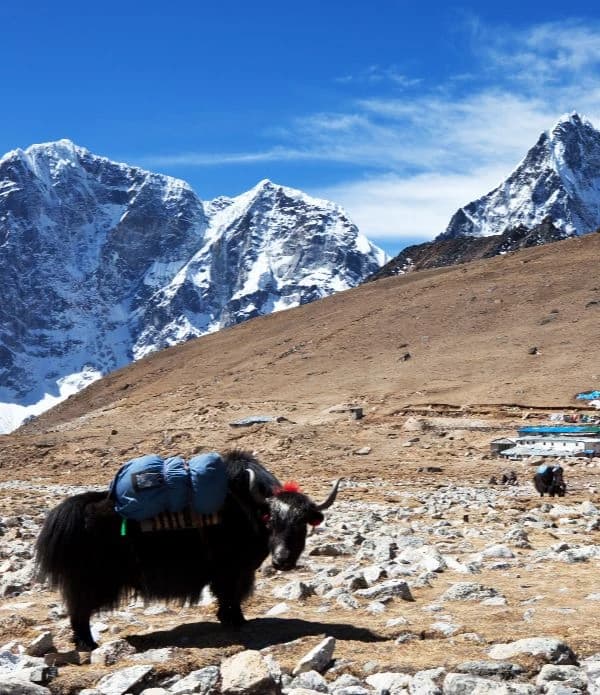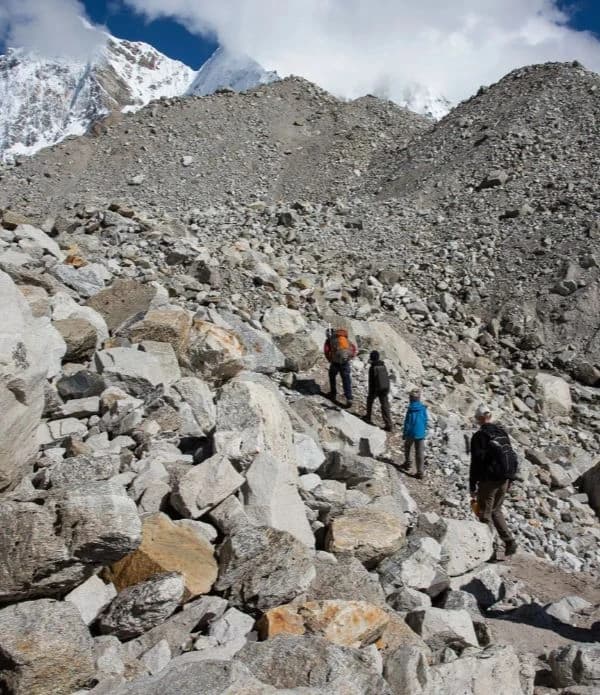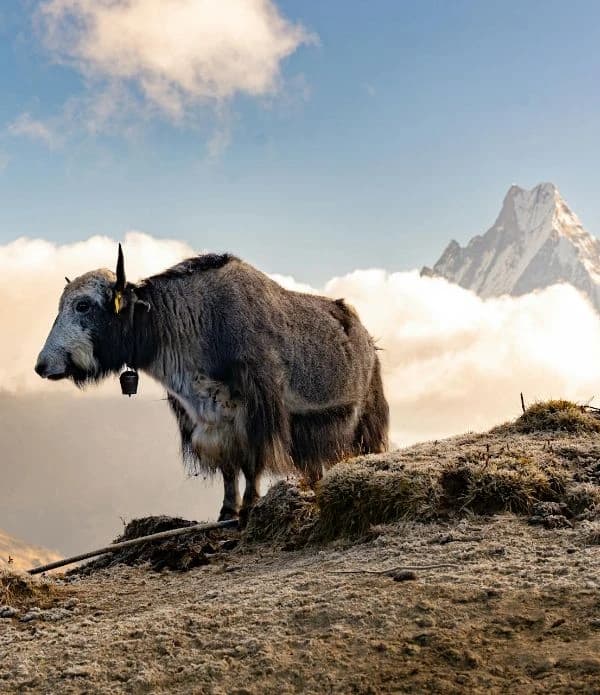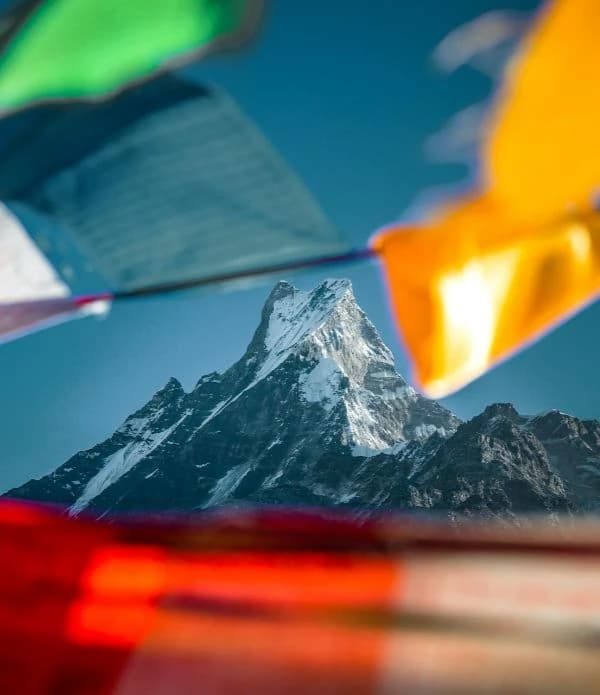Whether you're eyeing the rugged Manaslu Circuit, the sacred trails of Tsum Valley, or a combo of both, timing matters more than you think. This blog breaks it down season by season—spring blooms, monsoon mud, autumn clarity, and winter silence, so you know exactly what to expect and how to prepare.
Manaslu Region Trekking: Seasonal Weather and Preparation Tips
Here, you’ll get an insight into weather conditions month by month, from the warm hills of Soti Khola to the snow-covered Larke La Pass. This blog will walk you through what to pack, what to watch out for, and how trekking the Manaslu Circuit differs from the more sheltered Tsum Valley.
Whether you’re planning early or starting the trek tomorrow, this blog will help you feel ready and sure of what to expect. Let’s walk through the seasons together.
Spring (March to May)
Weather Conditions in Spring
Spring is one of the best times to trek in the Manaslu region, whether you're heading along the Manaslu Circuit or exploring the quieter trails of the Tsum Valley. Expect mild daytime temperatures, chilly mornings and evenings, and mostly clear skies. The hillsides burst into color with blooming rhododendrons, especially in the lower elevations around Jagat and Chumling.
As the season progresses, it gets warmer and drier across both routes. However, higher areas—like Larke La Pass on the Circuit or Mu Gompa in Tsum Valley—may still hold patches of snow in March and early April.
Spring Manaslu Trek Preparation Tips
- Dress in layers. Mornings start cold, but afternoons heat up quickly in both regions. Hence, layering helps regulate comfort from the valley villages to the high-altitude gompa.
- Pack microspikes or trekking poles. These are especially helpful on icy trails near Larke La Pass or snow-covered paths near Mu Gompa.
- Protect your skin and eyes. The UV rays are intense at altitude—bring strong sunscreen, sunglasses, and lip balm with SPF.
- Book ahead. Spring is a popular trekking season. While the Circuit has more established lodges, the Tsum Valley has fewer teahouses, so it's wise to secure your accommodation in both routes early.
|
Month
|
Lower Region (700–2,000 m)
|
Mid Region (2 000–4 ,000 m)
|
High Region (4,000–5,160 m)
|
|---|---|---|---|
|
March
|
10 to 20°C
|
0 to 10°C
|
-10 to 0°C
|
|
April
|
12 to 22°C
|
3 to 13°C
|
-7 to 3°C
|
|
May
|
15 to 25°C
|
5 to 15°C
|
-5 to 5°C
|
Summer/Monsoon (June to August)
Weather Conditions in Monsoon
Next up, monsoon season brings warm temperatures and heavy rainfall to the Manaslu region. In the lower areas—like Soti Khola, Machha Khola, and Philim—expect hot, humid days with thick clouds and frequent downpours. Also, trails become muddy and slippery, while landslides are a real concern, especially between Machha Khola and Deng.
Additionally, the Tsum Valley sits in a slightly rain-shadowed zone and may be relatively drier, but it’s not immune to monsoon effects. Trails can still be wet, and views are often blocked by cloud cover. Furthermore, leeches also become more active in forested sections, particularly below 2,000 meters.
Monsoon Trek Preparation Tips
- Wear waterproof gear. Pack a reliable rain jacket, quick-drying clothes, and waterproof trekking boots. Gaiters help keep mud and water out.
- Bring insect protection. Use insect repellent and wear long socks or leech-proof socks in the lower jungle zones.
- Stay flexible. Landslides or swollen rivers can delay your plans. So, build extra buffer days into your itinerary and stay updated on trail conditions.
- Know your limits. This season is best suited for experienced trekkers who are comfortable navigating rough terrain in unpredictable weather conditions.
|
Month
|
Lower Region (700–2,000 m)
|
Mid Region (2 000–4 ,000 m)
|
High Region (4,000–5,160 m)
|
|---|---|---|---|
|
June
|
18 to 27°C
|
7 to 17°C
|
-3 to 7°C
|
|
July
|
20 to 28°C
|
10 to 18°C
|
0 to 8°C
|
|
August
|
20 to 27°C
|
10 to 18°C
|
0 to 8°C
|
Autumn (September to November)
Weather Conditions in Autumn
Moving on, autumn is the best time to trek in the Manaslu region. During this season, the skies are clear, the air is crisp, and the mountain views are absolutely stunning.
Similarly, days are dry and comfortably warm, while nights get cold, especially at higher altitudes. Plus, this is the perfect season for crossing high passes like Larke La without worrying about heavy snow or rain.
Manaslu Region Autumn Trek Preparation Tips
- Pack for variety. Dress in layers to stay warm in the mornings and evenings, but cool during the day.
- Book everything early. Autumn is one of the peak seasons, so secure your permits, transportation, and teahouse stays in advance.
- Carry a camera. The light is golden, the skies are spotless, and the landscape is at its most photogenic. Make sure to capture it all.
Thus, this is the season when everything aligns—weather, views, and trail conditions, so make the most of it.
|
Month
|
Lower Region (700–2,000 m)
|
Mid Region (2 000–4 ,000 m)
|
High Region (4,000–5,160 m)
|
|---|---|---|---|
|
September
|
18 to 25°C
|
7 to 15°C
|
-3 to 5°C
|
|
October
|
12 to 22°C
|
3 to 12°C
|
-7 to 3°C
|
|
November
|
8 to 18°C
|
-2 to 8°C
|
-12 to -2°C
|
Winter (December to February)
Weather Conditions
Winter in the Manaslu region is brutally cold, especially above 3,500 meters. Expect freezing days and even colder nights. The skies stay clear, but the cold bites hard. Larke La Pass is often buried in snow or even completely closed.
That said, if you’re trekking the Tsum Valley, it’s more accessible this time of year. You’ll still get crisp mountain views—just without the high-altitude pass challenges.
Preparation Tips
- Bring serious cold-weather gear. You’ll need a 4-season sleeping bag, insulated down jackets, windproof outer layers, and thermal base layers to stay warm.
- Plan for limited services. Few trekkers come this time of year, so while you'll get solitude, many teahouses may be closed. Therefore, always confirm ahead.
- Know what you're getting into. Snow and ice make the trails slippery and dangerous. Only trek in winter if you're experienced or with a certified guide.
|
Month
|
Lower Region (700–2,000 m)
|
Mid Region (2 000–4 ,000 m)
|
High Region (4,000–5,160 m)
|
|---|---|---|---|
|
December
|
5 to 15°C
|
-5 to 5°C
|
-15 to -5°C
|
|
January
|
5 to 15°C
|
-5 to 5°C
|
-15 to -5°C
|
|
February
|
7 to 17°C
|
-3 to 7°C
|
-13 to -3°C
|
Different Conditions: Manaslu Circuit vs. Tsum Valley
The Manaslu Circuit and Tsum Valley treks both lie in the same remote corner of the Himalayas. However, each treks serve up very different experiences when it comes to weather, terrain, and preparation.
The Tsum Valley Trek stays lower in elevation, which means it’s often drier, more temperate, and less exposed to harsh winds. Also, the terrain is gentler, making the walking easier, especially in winter when the high passes become a gamble. However, expect more basic facilities along the way. Fewer trekkers visit this route, but that’s part of what makes it feel so peaceful and preserved.
When it comes to the Manaslu Circuit Trek, it’s a rugged, high-altitude adventure. It takes you over Larke La Pass—a wind-whipped, snow-prone crossing that can shut down entirely in winter or early spring.
Additionally, the risks or consequences are greater at higher altitudes. Here, altitude, sudden cold snaps, and shifting weather demand serious preparation and flexibility.
Planning to combine both trails into one epic journey? The Manaslu Tsum Valley Trek links them beautifully, giving you the solitude of Tsum Valley and the thrill of the circuit in a single route. Just make sure your gear and mindset are ready for everything from sunny valleys to snowbound passes.
Whichever path you take, remember to pack smart, stay informed, and move with intention. The weather might shape your route, but your preparation shapes your experience.
Essential Gear by Season
Every season in the Manaslu region comes with its own set of challenges, so pack light, but pack smart. Here’s what to bring depending on when you’re trekking:
Spring (March to May)
- Layered clothing for chilly mornings and warm afternoons.
- Microspikes or trekking poles for lingering snow at higher altitudes.
- Sunscreen, lip balm with SPF, and sunglasses for intense UV exposure.
- Quick-dry base layers to manage sweat during uphill climbs.
Summer/Monsoon (June to August)
- Waterproof boots and rain gear (jacket, pants, backpack cover).
- Quick-dry clothing to stay comfortable in humidity.
- Insect repellent—leeches and bugs are common in lower altitudes.
- Flexible itinerary in case of delays from landslides or trail closures.
Autumn (September to November)
- Warm layers for cold mornings and nights, especially at high altitudes.
- Camera gear for capturing crystal-clear mountain views.
- Sunscreen and lip balm with SPF—the sun is still strong even in the cold.
- Headlamp or flashlight for shorter daylight hours.
Winter (December to February)
- 4-season sleeping bag and insulated jacket to handle freezing nights.
- Thermal base layers, gloves, a hat, and a neck gaiter for extreme cold.
- Crampons or microspikes if attempting snowy sections.
- Emergency blanket and extra snacks—fewer teahouses stay open.
Final Thoughts
Trekking in the Manaslu region isn’t just a physical journey—it’s an emotional one, too. The path tests your preparation, patience, and sense of wonder. Each season adds its own texture: rhododendrons in spring, moody monsoon trails, golden autumn light, and the hushed chill of winter.
Whether you're chasing the raw thrill of Larke La or the spiritual stillness of the Tsum Valley, being season-smart can make all the difference. Know what to expect. Pack with purpose. And walk with awareness.
No matter when you go, the Manaslu region rewards those who come prepared. Clear skies, heart-pounding views, and a deeper connection to the trail beneath your feet await. Therefore, let the mountains surprise you—but never catch you off guard.
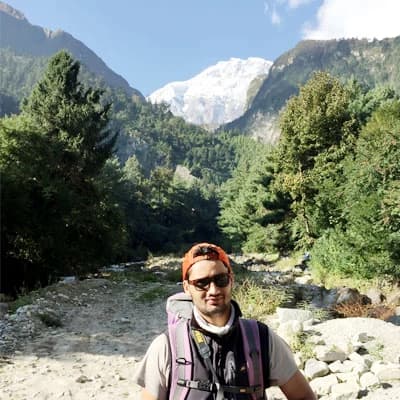
.webp&w=3840&q=75&dpl=dpl_5no2mbdoNHZofbQzNp4xwNy1a21g)

